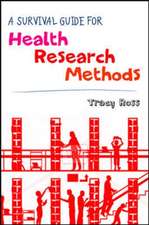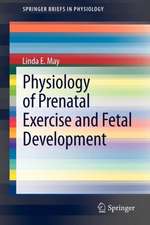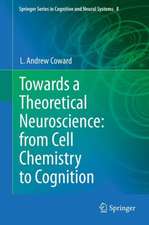Transition Metals in Biochemistry: Molecular Biology, Biochemistry and Biophysics Molekularbiologie, Biochemie und Biophysik, cartea 26
Autor A. S. Brillen Limba Engleză Paperback – 27 dec 2011
Din seria Molecular Biology, Biochemistry and Biophysics Molekularbiologie, Biochemie und Biophysik
- 15%
 Preț: 627.97 lei
Preț: 627.97 lei - 15%
 Preț: 635.47 lei
Preț: 635.47 lei - 15%
 Preț: 634.82 lei
Preț: 634.82 lei - 15%
 Preț: 633.35 lei
Preț: 633.35 lei -
 Preț: 401.03 lei
Preț: 401.03 lei - 5%
 Preț: 656.53 lei
Preț: 656.53 lei - 5%
 Preț: 712.81 lei
Preț: 712.81 lei - 15%
 Preț: 648.74 lei
Preț: 648.74 lei - 5%
 Preț: 712.09 lei
Preț: 712.09 lei - 15%
 Preț: 644.63 lei
Preț: 644.63 lei - 15%
 Preț: 634.00 lei
Preț: 634.00 lei - 15%
 Preț: 641.71 lei
Preț: 641.71 lei - 15%
 Preț: 637.59 lei
Preț: 637.59 lei - 15%
 Preț: 644.82 lei
Preț: 644.82 lei - 15%
 Preț: 634.00 lei
Preț: 634.00 lei - 15%
 Preț: 650.37 lei
Preț: 650.37 lei - 15%
 Preț: 637.59 lei
Preț: 637.59 lei - 15%
 Preț: 648.89 lei
Preț: 648.89 lei - 15%
 Preț: 632.70 lei
Preț: 632.70 lei - 15%
 Preț: 635.96 lei
Preț: 635.96 lei - 15%
 Preț: 639.41 lei
Preț: 639.41 lei - 15%
 Preț: 644.18 lei
Preț: 644.18 lei - 15%
 Preț: 654.62 lei
Preț: 654.62 lei - 15%
 Preț: 650.69 lei
Preț: 650.69 lei -
 Preț: 377.73 lei
Preț: 377.73 lei - 15%
 Preț: 634.82 lei
Preț: 634.82 lei - 15%
 Preț: 646.11 lei
Preț: 646.11 lei -
 Preț: 388.90 lei
Preț: 388.90 lei - 15%
 Preț: 640.24 lei
Preț: 640.24 lei - 15%
 Preț: 635.80 lei
Preț: 635.80 lei -
 Preț: 385.25 lei
Preț: 385.25 lei -
 Preț: 377.95 lei
Preț: 377.95 lei - 15%
 Preț: 649.39 lei
Preț: 649.39 lei - 15%
 Preț: 635.47 lei
Preț: 635.47 lei
Preț: 637.13 lei
Preț vechi: 749.56 lei
-15% Nou
Puncte Express: 956
Preț estimativ în valută:
121.95€ • 132.51$ • 102.51£
121.95€ • 132.51$ • 102.51£
Carte tipărită la comandă
Livrare economică 21 aprilie-05 mai
Preluare comenzi: 021 569.72.76
Specificații
ISBN-13: 9783642811500
ISBN-10: 3642811507
Pagini: 200
Ilustrații: VIII, 186 p. 7 illus.
Dimensiuni: 170 x 244 x 11 mm
Greutate: 0.33 kg
Ediția:Softcover reprint of the original 1st ed. 1977
Editura: Springer Berlin, Heidelberg
Colecția Springer
Seria Molecular Biology, Biochemistry and Biophysics Molekularbiologie, Biochemie und Biophysik
Locul publicării:Berlin, Heidelberg, Germany
ISBN-10: 3642811507
Pagini: 200
Ilustrații: VIII, 186 p. 7 illus.
Dimensiuni: 170 x 244 x 11 mm
Greutate: 0.33 kg
Ediția:Softcover reprint of the original 1st ed. 1977
Editura: Springer Berlin, Heidelberg
Colecția Springer
Seria Molecular Biology, Biochemistry and Biophysics Molekularbiologie, Biochemie und Biophysik
Locul publicării:Berlin, Heidelberg, Germany
Public țintă
ResearchCuprins
1 The Role of Transition Metal Ions in Biological Oxidation and Related Processes.- 1. Transition Metal Ions.- 2. Prosthetic Groups.- 3. Equilibrium Considerations in Reactions of Transition Metals.- 4. Molecular Functions of Proteins Containing Transition Metal Ion Prosthetic Groups.- 5. The Role Which a Transition Metal Ion Plays in the Function of a Protein.- 6. Experimental Methods.- 7. Some Aspects of the Role of the Polypeptide in the Functioning of Proteins Containing Transition Metal Ions.- 2 Metal Coordination in Proteins.- 1. Ligands.- 2. The Established Coordination in Several Proteins.- 3. Covalency.- 4. Some Aspects of Differences in Heme Binding.- 3 Copper.- 1. Cupric Peptides.- 2. EPR of Cupric Peptides and Related Complexes.- 3. The Blue Proteins.- 4. Magnetic and Optical Properties of Quantum Mechanical Models of the Cupric Ion.- 5. “Nonblue” Coordination in Copper Proteins.- 4 Heme Iron.- 1. Valence and Spin States of Iron.- 2. Magnetic Susceptibility.- 3. Valence State Determination.- 4. Optical Properties.- 5. Spin State Equilibria.- 6. Influences of Symmetry upon the Energy Levels of Low- and High-Spin States.- 7. Ligand Hyperfine Effects in Ferric Hemeproteins.- 8. Iron Hyperfine Effects.- 9. Modified Hemes.- 10. Photodissociation and Recombination.- 5 Nonheme Iron and Molybdenum.- 1. Iron Storage and Transport Proteins.- 2. Iron-Sulfur Proteins.- 3. Molybdenum.- 6 Electronic Structures and Properties.- 1. Atomic Orbitals.- 2. Spin States.- 3. Transition Metal Ions.- 4. Ligands and Molecular Orbitals.- 5. Absorption of Light.- 6. Interaction of Transition-Metal Ions with an Applied Magnetic Field.- 7. Magnetic Interactions of the Metal Electrons with Nuclei in the Coordination Sphere.- 8. Optical Activity.- References.












